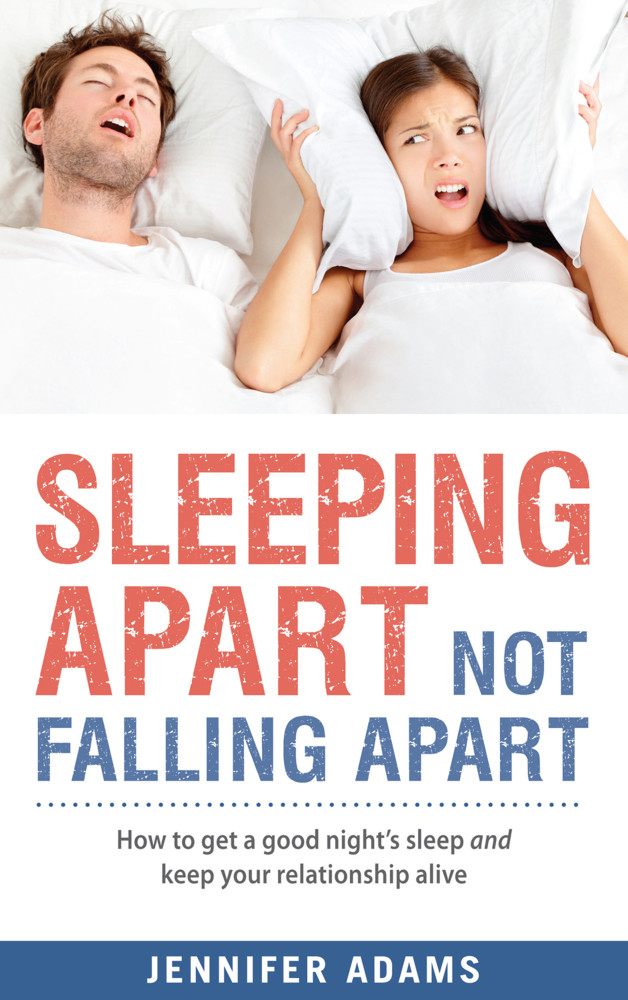By Nara Schoenberg
Chicago Tribune.
Jennifer Adams has tried sleeping in the same bed with her husband.
“We were both wrecked,” she says. “It would have made a great cartoon. He knew he snored and was keeping me up. I was kind of pushing him to roll him over, and he started to feel really bad that he was keeping me awake, so he got anxious about falling asleep.”
Soon, neither one was sleeping, and he still had to wake up at 5 a.m. for his job as a ceramic tiler.
The solution they arrived at is surprisingly common: Surveys by the National Sleep Foundation suggest that anywhere from 11 to 23 percent of live-in couples sleep in separate beds. But Adams’ willingness to talk about her experience sets her apart.
In the past few years, home design bloggers (such as apartmenttherapy.com) and some thought leaders (Dr. James Hamblin at the Atlantic) have begun questioning the widely held belief that all happy couples sleep in the same bed. Some relationship books (“The Power of Surrender” by Dr. Judith Orloff) present separate sleeping as a valid option. But Adams, an Australian communications professional, has gone further, stepping forward as an author and blogger to share her personal experience of separate sleeping.
Brooke O’Donnell, managing director of Trafalgar Square Publishing, distributor of Adams’ book, “Sleeping Apart, Not Falling Apart,” in the U.S., says it does not appear to have an American equivalent.
“The idea of sleeping apart has such a stigma, and this addresses it so well,” O’Donnell says.
Adams points to numerous examples of stigma against separate sleeping, which is widely associated with sexual disinterest and relationship turmoil. The term “sleeping together” means sex, she points out, and “sleeping in separate beds” is verbal shorthand for fighting. Gossip magazines hammer home the point that happy couples sleep in the same bed.
In the beginning of the movie “Hope Springs,” she says, the image of Meryl Streep and Tommy Lee Jones sleeping apart is used to signify a sexless marriage. In the TV show “How I Met Your Mother,” a couple try twin beds, she says, and love them but then succumb to peer pressure and returns to co-sleeping.
“Is that really the only thing that allows you to have sex?” Adams says. “Come on!”
Sleeping apart can reduce resentment and increase well-being, she says. And if you wake up in the night feeling amorous, your spouse is only a bed or a bedroom away.
“Sometimes my husband will FaceTime me and invite me to bed,” she says. “It doesn’t stop you from having sex. It just doesn’t.”
Adams met her husband in her late 30s, after a previous relationship foundered, in part because her ex, a snorer, was unwilling to accommodate her need to sleep in a separate room.
“I was absolutely at my wits’ end,” she says. “I was sneaking out of the room to sleep on the floor of the bedroom next door.”
In theory, she says, sharing a bed is a wonderful thing; she’d do it with her husband if she could. But after sharing a bed for a week, during which both experienced intense sleep deprivation, they had a talk and decided to try separate beds on weekdays. Later, they moved to separate beds every night.
“If you’re able to talk to your partner and have that freedom in the relationship to be yourself and have your needs met, then this is just one of those additional things that come up,” she says.
Adams got a lot of raised eyebrows from friends and family, she says. But 11 years later, she and her husband are still madly in love, and still happily sleeping in separate beds.
“We’ve just kept talking,” she says. “And we still hop into each other’s beds, and I’ll lie in his bed at night until he kicks me out at 8:30 because he wants to go to sleep. You make it work because you want to make it work.”














































































































































































































































































































































































